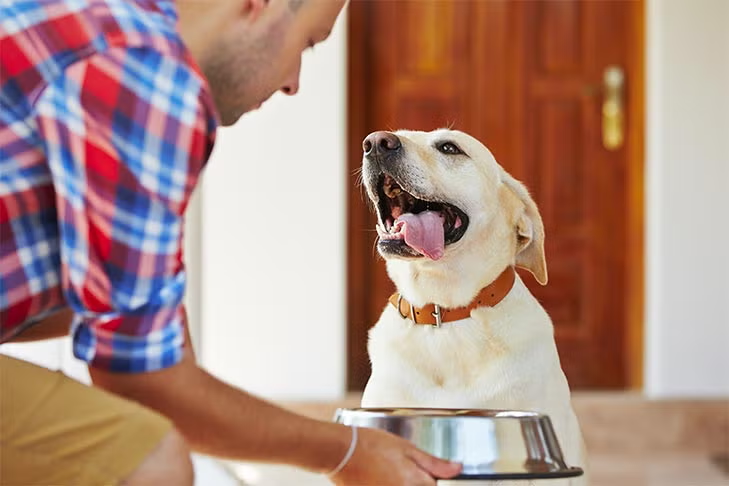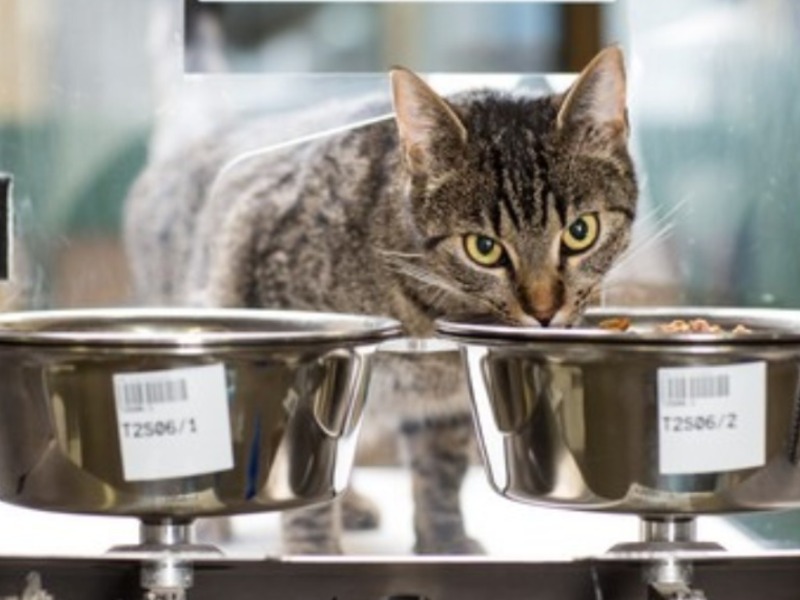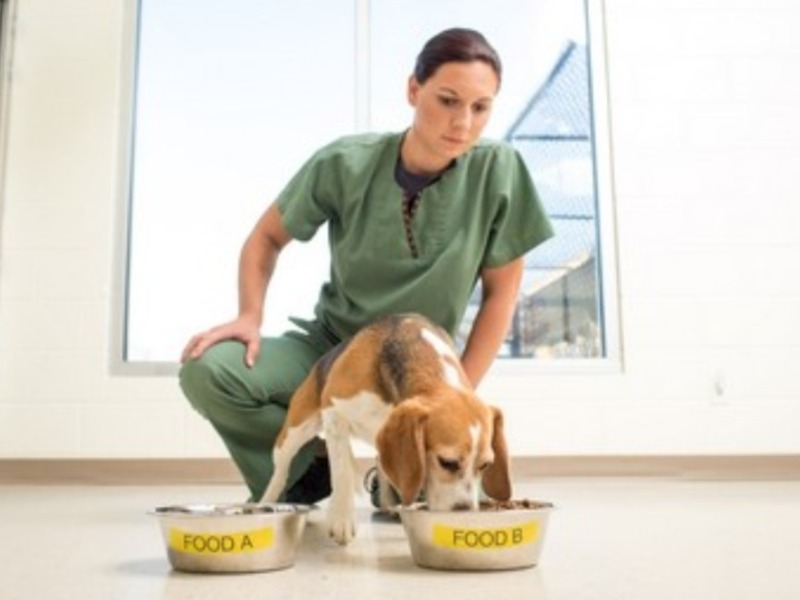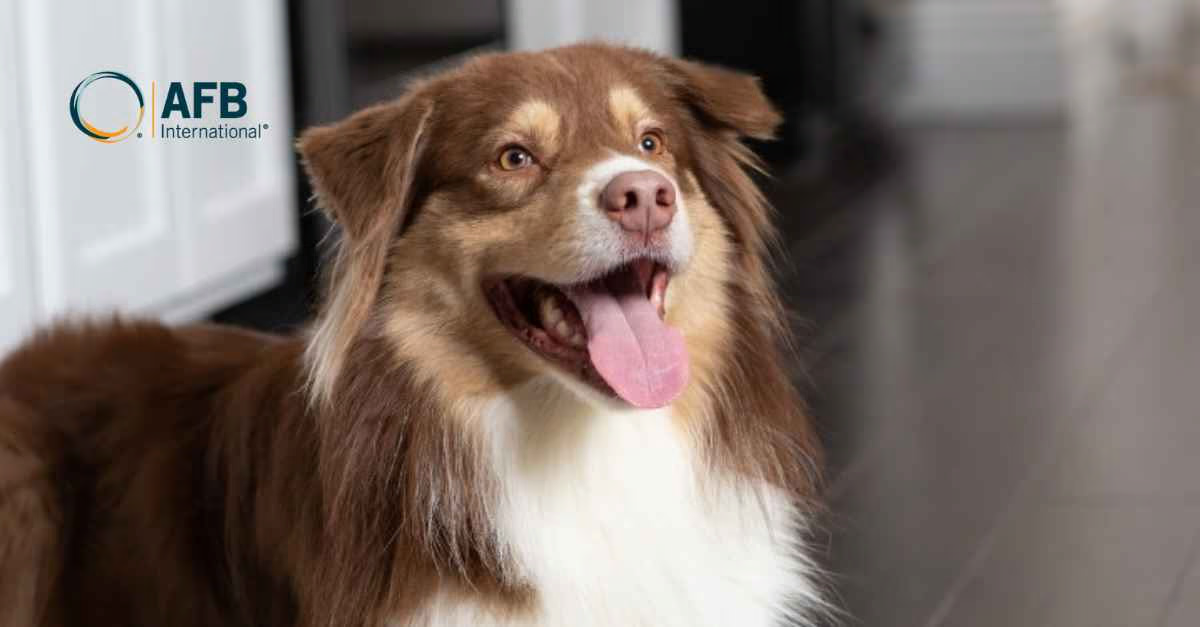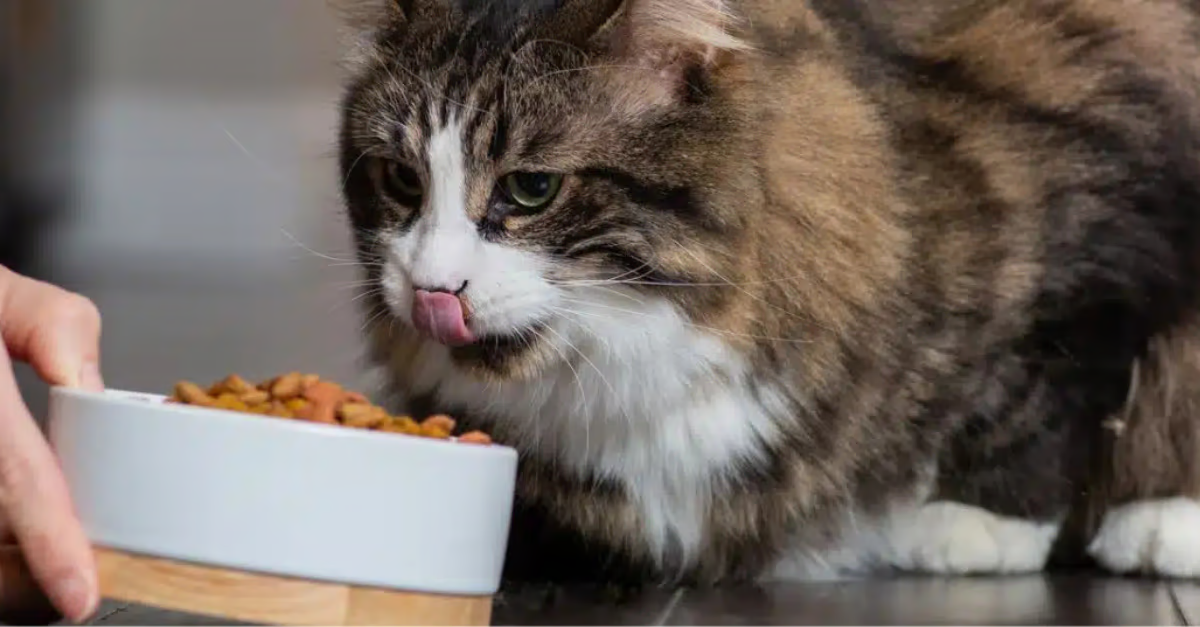APPLIED BEHAVIOR RESEARCH, AFB INTERNATIONAL
More and more, pet parents want to know their dog is enjoying a meal in addition to simply eating it. If a meal is perceived as enjoyable, then there is a greater likelihood of a repurchase.
We presented videos with different levels of dog feeding enjoyment (i.e., % Nose in BowlSM) to pet parents. However, when pet parents judge 'enjoyment', they could have different expectations for how their pet should respond. An example of a difference in expectations is labored swallows, or chin thrusts, during eating. This study took a closer look at whether labored swallows are likely to be perceived as positive or negative by pet parents when describing their dog's enjoyment of a meal.
SURVEY DESIGN
Paired video surveys were conducted at AFB International in Missouri, USA. Fifty-five survey responses were collected from dog pet parents. Each survey participant watched two videos (A and B) of a dog eating a meal. Videos A and B differed in the level of % Nose in Bowl, which is an objective measure of feeding enjoyment (i.e., the proportion of time focused on the food). Three categories of paired videos A and B represented three levels of difference in % Nose in Bowl: low 3%, medium 6% and high 12%.
Category 1: (3% Nose in Bowl difference)= Both videos A and B contained labored swallows. Video A had double the number of examples than B.
Category 2: (6% Nose in Bowl difference)= Both videos contained labored swallows, but A had more than double the number of examples than B.
Category 3: (12% Nose in Bowl difference)= Video A contained labored swallows while video B had zero examples.

Participants were randomly assigned to video categories and were not aware that labored swallows were the focus of the study. After each viewing, participants were asked in which video (A or B) the dog enjoyed the food more. Our hypothesis was that pet parents would perceive videos containing more labored swallows as the less enjoyed meal.
RESULTS
For Category 1 where labored swallows occurred in both videos and % Nose in Bowl difference was low, unexpectedly, the pet parent was slightly more likely to assign labored swallows as a positive behavior (Figure 2).
Marketplace
In Category 2 labored swallows were present in both videos with Video A having more than double the number of video B and medium difference in % Nose in Bowl. As expected, participants rated video B with less labored swallows as more enjoyable.
In Category 3 labored swallows were only present in Video A and videos had greatest difference in % Nose in Bowl. As expected, Video B with no labored swallows was associated with more enjoyment.
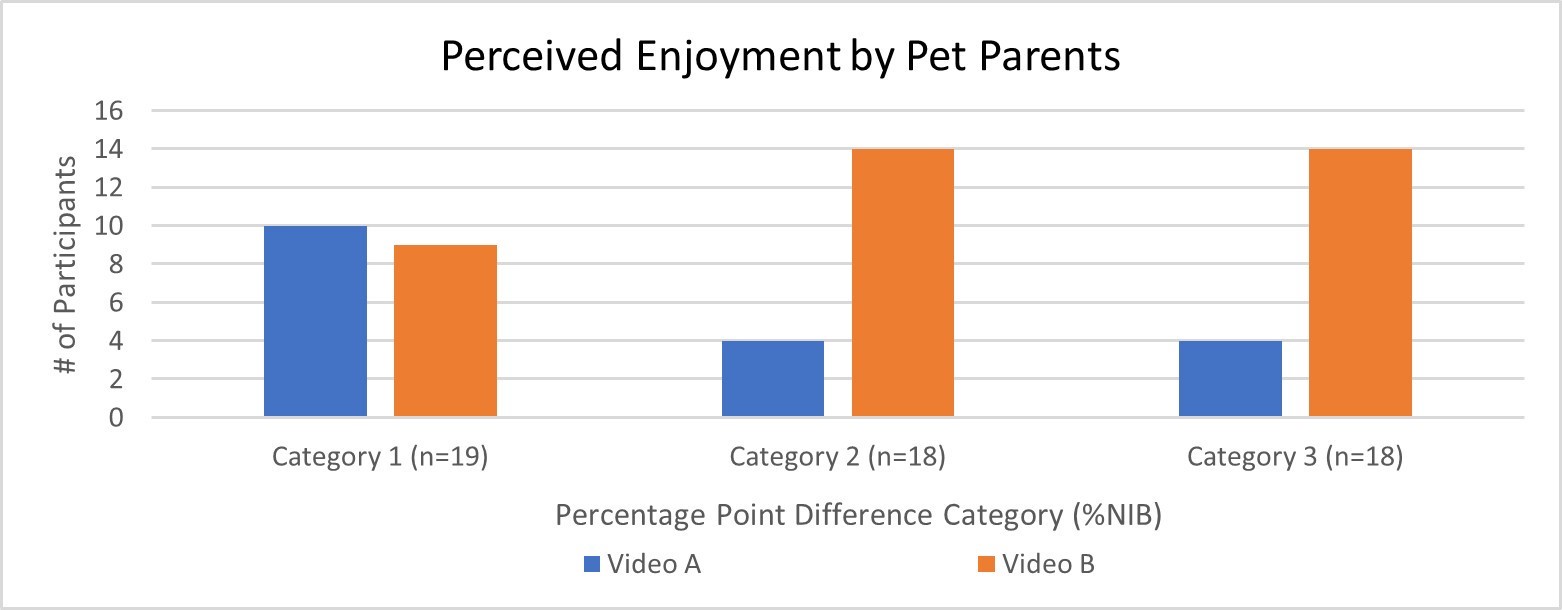
CONCLUSIONS
Prior to this study there wasn't a clear understanding of how labored swallows could be perceived as part of dog feeding enjoyment. Despite a small portion of participants who associated labored swallows as a positive response, most of our participants perceived labored swallows in a negative context, particularly when % Nose in Bowl differences were 6% or greater (Categories 2 and 3).
Enjoyment was more difficult for pet parents to distinguish when % Nose in Bowl was similar in videos A and B even when labored swallows occurred twice as often (Category 1).
The knowledge gained from this closer look into labored swallows will guide behavioral interpretation of future feeding trials that this response is generally perceived by pet parents as a negative action.
By: AFB International
You could be interested: Can Feeding Your Dog Once Daily Benefit their Health?
About company
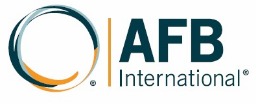
About company
WHAT WE DO
At AFB International, we develop and produce a full range of liquid and dry palatability enhancers. We use high-quality ingredients proven to optimize companion animal response and consumption.
Our specialty? Meeting your unique needs with custom support. Our worldwide staff of technical experts is ready to assist you with all aspects of palatability enhancement, from product development and testing to processing, logistics and more.
HOW WE WORK
Our successful customer relationships are built on clear, consistent communication—starting with really listening to understand your needs so we can respond quickly and effectively. And we keep listening. AFB scientists and technical service managers routinely travel to customer facilities to clearly understand the challenges at hand and the systems in place. Then we can recommend the best viable solutions.
OUR TEAM
AFB is dedicated to improving the health and wellness of companion animals worldwide through superior products and services. Our diverse, committed team works collaboratively to serve our clients. Get to know us—and let us know how we can help you!
HISTORY
AFB launched in 1986 and has grown to be the global science and technology leader in pet food palatability. Headquartered in St. Charles, Missouri, USA, AFB is a global company with state-of-the-art facilities in the United States, Argentina, Brazil, Mexico, the Netherlands, China, and Australia. AFB is a wholly owned subsidiary of Ensign-Bickford Industries, Inc., a privately held, family-owned, professionally managed technical business that traces its roots back more than 185 years.










